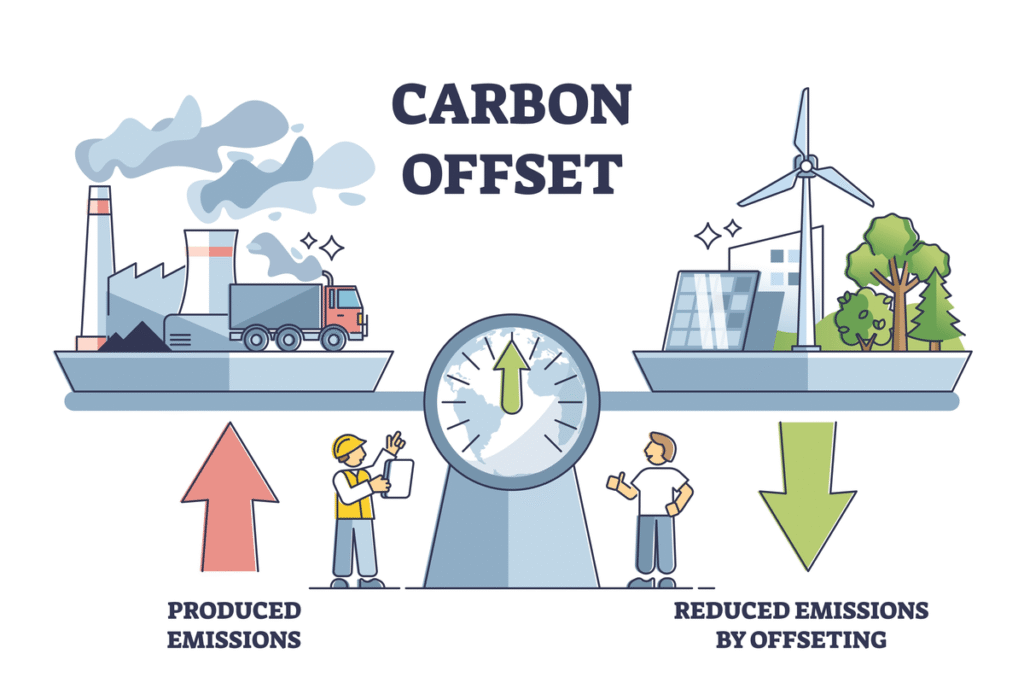The world is facing the urgent challenge of climate change. Rising temperatures, increasing pollution, and frequent extreme weather events highlight the need for cleaner energy solutions. One of the most effective ways to reduce your carbon footprint is by switching to solar energy. In India, where sunlight is abundant for most of the year, solar power has become a practical and affordable choice for households and businesses.
This article will explain what a carbon footprint is, how solar panels help reduce emissions, and why going solar is one of the best investments for a greener and more sustainable future.
What is Carbon Footprint?

Your carbon footprint is the total amount of greenhouse gases (GHGs) you produce in your daily life. These gases, mainly carbon dioxide (CO2), methane (CH4), and nitrous oxide (N2O), trap heat in the atmosphere and cause global warming.
Some everyday activities that increase your carbon footprint include:
- Using electricity from coal-powered plants.
- Driving petrol or diesel vehicles.
- Using air conditioners for long hours.
- Consuming products made from high-energy manufacturing.
In India, the average household electricity consumption is around 90–120 units per month in rural areas and 250–300 units in urban homes. Most of this electricity comes from coal, which is the largest contributor to carbon emissions.
Also Read Wiring a Basic Solar Panel to a Battery: Complete Step-by-Step Guide for Beginners
How Solar Energy Reduces Carbon Footprint
Switching to solar power reduces the dependence on fossil fuels. Here’s how solar energy helps cut emissions:
- Zero emissions during use – Solar panels generate electricity without burning fuel. No smoke, no greenhouse gases.
- Less reliance on coal power – Every unit of solar electricity replaces one unit from the grid, which is often coal-based.
- Durability – Solar panels last for 25–30 years, continuously producing clean energy.
- Energy independence – Using solar power reduces dependence on polluting energy sources.
For example, a 1 kW solar system in India can generate 4–5 units of electricity daily. Over a year, that is about 1,500–1,800 units. This avoids nearly 1.5 tons of CO2 emissions annually, which is equal to planting 70–80 trees every year.
Why Solar Energy is Perfect for India
India receives about 300 sunny days in a year, making it ideal for solar power generation. The government has also launched several incentives and subsidy programs under schemes like PM Surya Ghar Muft Bijli Yojana to encourage adoption of rooftop solar.
Some key reasons why solar is growing in India:
- High electricity bills in urban areas.
- Frequent power cuts in rural regions.
- Decreasing cost of solar panels and batteries.
- Net metering policies that allow you to sell extra solar electricity to the grid.
Carbon Savings: Solar vs Conventional Energy
Let’s compare solar with other sources of energy in terms of emissions:
- Coal-based electricity: Produces about 1 kg of CO2 per unit of electricity.
- Solar electricity: Produces almost zero emissions after installation.
- Diesel generators: Produce 2.5–3 kg of CO2 per unit of electricity.
If a household in India installs a 5 kW rooftop solar system, it can save about 6–7 tons of CO2 emissions every year. Over 25 years, this adds up to nearly 150 tons of CO2 avoided.
Benefits of Reducing Carbon Footprint with Solar
- Lower electricity bills – Solar reduces monthly power expenses by 70–90%.
- Environmental protection – Solar power fights climate change by reducing emissions.
- Energy independence – You are less dependent on grid electricity and diesel backup.
- Increased property value – Homes with solar panels attract buyers and renters.
- Government subsidies – Indian households can save up to 40% on installation costs with subsidies.
Solar for Homes vs Businesses
- For Homes: A 3–5 kW solar system is enough for most households. It covers appliances like fans, lights, TVs, refrigerators, and air conditioners.
- For Businesses: Factories, offices, and malls consume higher electricity. Commercial solar installations reduce operational costs and help in sustainability reporting.
Many Indian corporates are switching to solar to meet ESG (Environmental, Social, Governance) goals and report lower emissions.
Steps to Offset Carbon Footprint with Solar
- Calculate your electricity use – Check your monthly bill. Average homes need 250–300 units monthly.
- Choose the right solar system size – A 1 kW system covers about 120 units per month.
- Decide between on-grid and off-grid – On-grid helps reduce bills, while off-grid provides backup during power cuts.
- Check government subsidy schemes – Apply for rooftop solar subsidy to reduce upfront cost.
- Install and monitor – Use apps and smart meters to track solar production and savings.
Challenges in Going Solar
- High upfront cost – Even with subsidies, many families find it costly.
- Space requirement – Rooftop or ground space is needed.
- Maintenance – Dust and dirt reduce solar efficiency if not cleaned regularly.
- Awareness – Many people still do not understand solar’s long-term benefits.
Despite these challenges, the falling cost of solar panels makes it a profitable and eco-friendly investment in the long run.
FAQs on Offsetting Carbon Footprint with Solar
Q1. How much carbon can I save by installing solar panels at home?
A 1 kW solar system in India can save 1.5 tons of CO2 emissions every year.
Q2. Is solar really carbon-free?
While manufacturing panels creates some emissions, the overall carbon cost is very low compared to coal and diesel.
Q3. Can businesses claim carbon credits with solar?
Yes. Many Indian businesses use solar projects to claim carbon credits and improve their sustainability scores.
Q4. Is solar worth it in small towns and villages?
Yes. Solar provides electricity in areas with frequent power cuts and helps reduce diesel generator use.
Q5. How long before solar panels offset their carbon footprint?
Usually, within 2–3 years, the energy used in making solar panels is recovered by the clean energy they generate.
Conclusion
Solar power is one of the most powerful tools to offset your carbon footprint in India. By installing solar panels, households and businesses can reduce emissions, cut electricity bills, and contribute to a cleaner planet.
With government subsidies, improved technology, and abundant sunshine, switching to solar has never been easier. Each step towards solar adoption is a step towards a greener India and a sustainable future for the next generations.










